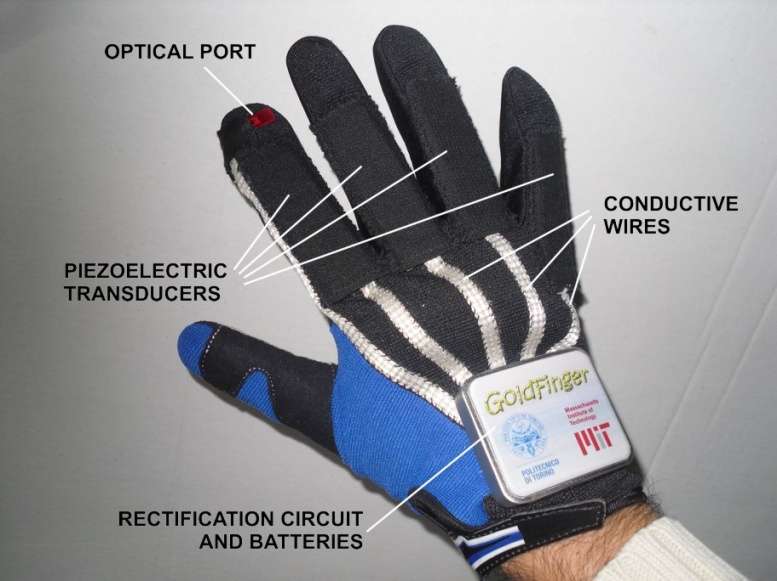Glove interface device powered by converting the user's biomechanical energy

Controlling machines remotely by simple hand movements will be possible thanks to Goldfinger, an innovative prototype of human-machine interface designed and built in collaboration between the Politecnico di Torino and the Massachusetts Institute of Technology in Boston under the direction of Dr. Giorgio De Pasquale from the Department of Mechanical and Aerospace Engineering of the Italian University.
The system was developed to simplify user-machine interfaces. In this case, the interface consists of a wearable glove that integrates all the electronic and mechanical components necessary for operation. The technology could benefit many industries, but a prime beneficiary is industry, where the technology could assist in the management of factory plants and machines, for example, in settings in which safety standards require special management of work spaces. Additionally, the medical field could use the technology, for example, to provide surgeons with an ergonomic controller that does not alter the normal movements of the hand. Finally, fields related to virtual reality could simulate work environments for staff training and other purposes.
Goldfinger is distinct from similar technologies because it has the ability to self-power. It generates electrical energy from the movement of the fingers, which provides a much greater autonomy of operation; furthermore, it is a model without electrical wires needed for a power supply. The wireless transmission method and the integration of many hi-tech components supported within the glove fabric constitute highly innovative features. Among these components, for example, there are conductive wires woven into the fabric texture, piezoelectric transducers with high flexibility and electrical switches made within the fabric itself rather than with the traditional electronic components.
The final result is a new human-machine interface based on the conversion of biomechanical energy, with which the user can send commands to various types of machines and systems with simple hand movements. The optical tracking software, together with the interface software, allow for the interpretation of the user's movements and converting them into commands and instructions to operate the facilities for which control is required.
Provided by Politecnico di Torino




















